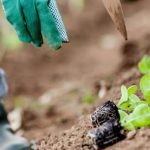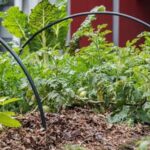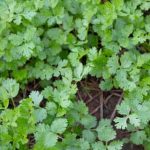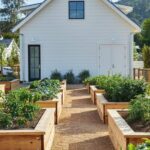Are you a beginner looking to try your hand at gardening? Vegetable gardening might be the perfect hobby for you. Not only does it offer numerous benefits, but it also provides the satisfaction of growing fresh produce right in your own backyard. In this article, we will explore why vegetable gardening is an ideal hobby for beginners and delve into the joys of growing your own food.
One of the major benefits of vegetable gardening for beginners is the opportunity it provides to connect with nature and enjoy spending time outdoors. Gardening allows you to escape the hustle and bustle of everyday life and find peace in nurturing plants and watching them grow. Additionally, working in a garden can be a great form of exercise, helping you stay active while enjoying a productive hobby.
Another advantage of vegetable gardening is having access to fresh and nutritious produce right at your fingertips. Growing your own vegetables means you have control over what goes into your food – no pesticides or harmful chemicals. There’s nothing quite like tasting a tomato that you nurtured from seed to ripe fruit. Plus, having your own garden means never having to worry about running out of certain vegetables or making impromptu trips to the grocery store.
In this article, we will guide you through each step of easy vegetable gardening for beginners – from choosing the right tools and location, preparing the soil, selecting the easiest vegetables to grow, planting and caring for your garden, all the way to harvesting and enjoying your homegrown goodies. So roll up your sleeves, grab a shovel, and let’s get started on this exciting journey into vegetable gardening.
Essential Tools and Supplies for Easy Vegetable Gardening Beginners
Starting a vegetable garden as a beginner requires having the right tools and supplies on hand. This section will provide a detailed list of essential gardening tools and supplies that beginners should consider acquiring, as well as tips on where to find affordable options.
Must-Have Gardening Tools
There are several important gardening tools that every beginner should have in their arsenal. These include:
- Spade or shovel: This is essential for digging and turning over soil.
- Garden fork: Great for loosening soil and removing weeds.
- Hand trowel: Perfect for planting seedlings and small plants.
- Pruning shears: Used for trimming plants and cutting branches.
- Garden hose or watering can: Necessary for watering your plants.
- Rake: Useful for leveling soil and collecting debris.
- Gardening gloves: Protect your hands from thorns, cuts, or blisters while working in the garden.
Supplies for Easy Vegetable Gardening
In addition to the necessary tools, there are some supplies that can make gardening easier and more efficient. Consider stocking up on the following:
- Raised garden bed or containers: If you don’t have access to a suitable gardening space in your yard, raised beds or containers can be used to grow vegetables in smaller areas such as balconies or patios.
- Organic compost or fertilizer: Enhance the fertility of your soil with compost or organic fertilizers to promote healthy plant growth.
- Mulch: Apply a layer of mulch around your plants to suppress weeds, conserve moisture, and regulate soil temperature.
- Plant markers: Keep track of what you’ve planted by labeling each vegetable variety with plant markers. This is especially helpful if you plan on growing multiple types of vegetables.
Finding Affordable Gardening Supplies
Gardening doesn’t have to break the bank. There are plenty of ways to find affordable tools and supplies for your vegetable garden. Consider the following options:
- Garage sales or thrift stores: Check out local garage sales or thrift stores, as they may have used gardening tools available at lower prices.
- Online marketplaces: Websites like Craigslist or Facebook Marketplace often have listings for inexpensive gardening tools and supplies from other gardeners in your area.
- Local gardening groups: Joining a gardening group or community can provide opportunities to swap or share gardening tools and supplies with fellow enthusiasts.
- Discount stores: Many discount stores carry basic gardening tools and supplies at affordable prices.
By acquiring the essential tools and supplies needed for easy vegetable gardening, beginners will be well-equipped to start their own home garden. With patience, dedication, and the right equipment, you can enjoy the satisfaction of growing your own fresh produce.
Choosing the Right Location for Your Vegetable Garden
Choosing the right location for your vegetable garden is essential for the success of your plants. By considering certain factors, such as sunlight, soil quality, and drainage, you can create an optimal environment for your vegetables to thrive.
Factors to consider when selecting a suitable location
When choosing a location for your vegetable garden, there are several important factors to consider. First and foremost, you’ll want to ensure that your garden receives adequate sunlight. Most vegetables require at least six hours of direct sunlight per day, so choose a spot in your yard that gets plenty of sun.
Another factor to consider is soil quality. Vegetables prefer soil that is rich in organic matter and has good drainage. Avoid areas with heavy clay or sandy soil, as these can lead to poor growth and drainage issues. Additionally, it’s important to select a location where water doesn’t pool or collect during heavy rain.
The importance of sunlight, soil quality, and drainage
Sunlight is crucial for photosynthesis, which is the process plants use to convert light into energy. Without enough sunlight, your plants may grow weak and leggy or produce less fruit. By selecting a sunny location for your vegetable garden, you’ll give your plants the best chance of thriving.
Good soil quality is also vital because it provides the nutrients that plants need to grow. Fertile soil rich in organic matter will help your vegetables develop strong roots and healthy foliage. Adequate drainage is equally important since waterlogged soil can drown plant roots and promote disease.
By understanding the importance of sunlight, soil quality, and drainage in vegetable gardening, you can strategically choose a location that will support healthy plant growth. Taking these factors into account will set you up for success as a beginner gardener and increase your chances of enjoying a bountiful harvest from your backyard oasis.
Preparing Your Soil for Successful Vegetable Gardening
Soil preparation is a crucial step in successful vegetable gardening. By taking the time to properly prepare your soil, you can create an optimal growing environment for your plants and ensure a bountiful harvest. Here are some steps to follow when preparing your soil for vegetable gardening:
- Remove weeds and debris: Before you begin any soil preparation, it’s important to clear the area of weeds and debris. Weeds compete with your vegetables for nutrients and water, so removing them will give your plants the best chance of thriving.
- Test your soil: Testing your soil is essential for understanding its nutrient content and pH level. You can purchase a soil testing kit from a garden center or use the services of a professional laboratory. Once you know the state of your soil, you can make any necessary adjustments to ensure optimal fertility.
- Improve soil structure: Soil structure refers to how well particles in the soil clump together, which affects its ability to hold moisture and nutrients. If your soil has poor structure, you can improve it by adding organic matter such as compost or well-rotted manure. This will not only enhance drainage but also provide essential nutrients for plant growth.
- Add amendments: Based on the results of your soil test, you may need to add certain amendments to correct nutrient deficiencies or adjust pH levels. For example, if your soil is acidic, you can add lime to raise the pH; conversely, if it is alkaline, sulfur or peat moss can help lower the pH.
- Till the soil: After adding organic matter and amendments, it’s time to till the soil to incorporate them evenly throughout. Using a garden fork or rototiller, turn over the top layer of soil to mix everything together thoroughly.
- Mulch the surface: Once you have prepared your soil, apply a layer of mulch on top to help retain moisture and suppress weed growth. Organic mulches such as straw or wood chips are commonly used in vegetable gardens.
By following these steps, you can ensure that your soil is well-prepared for successful vegetable gardening. Remember to regularly monitor your plants’ progress and make any necessary adjustments along the way to achieve the best results.
Selecting the Easiest Vegetables to Grow for Beginners
When starting a vegetable garden as a beginner, it is important to select the right vegetables that are easy to grow and have a high success rate. This will help boost your confidence and motivate you to continue gardening. Here are some of the easiest vegetables to grow for beginners:
- Leafy Greens: Leafy greens such as lettuce, spinach, and kale are perfect for beginners because they are low-maintenance and grow relatively quickly. They can be planted in both containers and garden beds, and they thrive in cool weather.
- Tomatoes: Despite being a fruit technically, tomatoes are commonly grown as vegetables in many gardens. They are fairly easy to grow and have a wide variety of cultivars to choose from. Tomatoes require full sun, well-drained soil, and regular watering.
- Radishes: Radishes are one of the fastest-growing vegetables, making them ideal for impatient beginners. They can be ready for harvest within three to four weeks after sowing the seeds. Radishes prefer cooler temperatures and loose soil.
- Green Beans: Green beans are great for beginners because they tolerate a wide range of growing conditions. They can be grown either as bush beans or pole beans depending on the space available in your garden. Green beans need full sun and regular watering.
- Zucchini: Zucchini is another easy vegetable that even beginners can grow successfully. It produces an abundance of fruit throughout the season, but make sure you have enough space in your garden as zucchini plants can take up quite some space.
| Vegetable | Growing Conditions |
|---|---|
| Leafy Greens (Lettuce, Spinach, Kale) | Cool weather; containers or garden beds |
| Tomatoes | Full sun, well-drained soil, regular watering |
| Radishes | Cooler temperatures, loose soil |
| Green Beans | Full sun, regular watering |
| Zucchini | Well-drained soil, ample space for plant growth |
Remember to start with a few varieties and gradually expand your vegetable garden as you gain experience. It is also important to follow the specific planting instructions for each vegetable and provide them with the necessary care they need. With these easy-to-grow vegetables, you’ll be enjoying a bountiful harvest in no time.
Planting and Caring for Your Vegetable Garden
Once you have chosen the right location for your vegetable garden and prepared the soil, it’s time to start planting and caring for your plants. This section will provide a step-by-step guide on sowing seeds and transplanting seedlings, as well as essential care tips for watering, fertilizing, and preventing common pests.
To start your vegetable garden, you can either sow seeds directly into the soil or start with seedlings that have already been started indoors. If you choose to sow seeds directly, make sure to follow the specific instructions on the seed packet regarding depth and spacing. It is also important to keep in mind the ideal conditions for each vegetable you are planting, such as temperature and sunlight requirements.
If you opt for transplanting seedlings, make sure to harden them off before planting them outdoors. This involves gradually exposing them to outdoor conditions by placing them outside for a few hours each day over the course of a week. After hardening off, dig a hole in the prepared soil that is slightly larger than the root ball of your seedling.
Gently remove the plant from its container and place it in the hole, making sure that it is level with or slightly above the soil surface. Fill in around the plant with soil and lightly firm it down.
Proper watering is crucial for the success of your vegetable garden. Most vegetables require about 1 inch of water per week, either from rainfall or irrigation. Water deeply so that it reaches down to the roots rather than just wetting the surface. To prevent disease, it’s best to water early in the morning so that excess moisture has a chance to evaporate during the day.
Fertilizing your vegetable plants will help provide them with necessary nutrients for healthy growth. Before planting, incorporate compost or well-rotted manure into your soil to improve fertility. As your plants grow, you can also apply a balanced vegetable fertilizer according to the instructions on the product packaging. Be careful not to over-fertilize, as this can lead to excess foliage growth at the expense of fruit production.
Lastly, it’s important to prevent and manage pests in your vegetable garden. Regularly inspect your plants for any signs of pests or disease, such as holes in leaves or discolored spots. If you notice any issues, identify the problem and take appropriate action, whether it’s removing affected plants, using organic pest control methods, or consulting a gardening expert for help.
By following these planting and care tips, you’ll be well on your way to a successful vegetable garden. Remember to stay vigilant and enjoy the process of nurturing your plants from seeds or seedlings to bountiful harvests of fresh vegetables that you can proudly enjoy with family and friends.
Harvesting and Enjoying Your Homegrown Vegetables
Once you have successfully planted and cared for your vegetable garden, it’s time to reap the rewards of your hard work. Harvesting and enjoying your homegrown vegetables is a gratifying experience that allows you to savor the freshness and delicious flavors of your produce. This section will provide guidance on when and how to harvest your vegetables, as well as tips for storing and making the most of your bounty.
Knowing the Signs of When to Harvest Your Vegetables
Each vegetable has its own indicators when it’s ready to be harvested. Here are some general guidelines:
- Leafy greens: Harvest these when the outer leaves are full-sized.
- Root vegetables: Wait until they reach a desirable size, usually indicated by visible portions sticking out of the soil.
- Tomatoes: Pick when they are fully colored but still firm.
- Cucumbers: Harvest before they turn yellow; pick them regularly to encourage continuous production.
- Peppers: Most varieties can be picked while still green or left on the plant to ripen into their final color.
It’s important to regularly check on your crops and harvest them at their peak maturity for optimum taste and texture.
Tips for Storing and Making the Most of Your Fresh Produce
Once you’ve harvested your homegrown vegetables, proper storage will help prolong their freshness:
- Leafy greens should be lightly washed, dried thoroughly, and stored in a breathable plastic bag or container in the refrigerator.
- Root vegetables can be stored in cool, dark places such as a cellar or pantry. Remove any excess soil but avoid washing them before storage.
- Tomatoes should be stored at room temperature away from direct sunlight. Ripe tomatoes can be refrigerated to extend their shelf life.
- Cucumbers are best stored in the refrigerator and used within a few days of harvest for optimal taste.
- Peppers can be kept at room temperature or refrigerated, depending on your preference.
To make the most of your homegrown vegetables, experiment with different recipes, preserving techniques, and sharing them with friends and family. Enjoy the satisfaction of cooking with produce you’ve nurtured from start to finish.
By following these guidelines for harvesting and storing your vegetables, you will maximize the enjoyment of your hard-earned bounty while ensuring its freshness and quality.
Troubleshooting Common Issues in Vegetable Gardening for Beginners
As a beginner in vegetable gardening, it’s important to be prepared for common issues that may arise during the growing process. By identifying and addressing these issues early on, you can increase your chances of a successful harvest. This section will highlight some of the most common problems that beginners may encounter in their vegetable gardens and provide strategies for prevention and management.
One common issue that many beginners face is pests. Whether it’s aphids, slugs, or caterpillars, pests can quickly damage or destroy your plants if left unchecked. To prevent pest infestations, it’s essential to regularly inspect your plants and take action at the first sign of trouble. There are several organic methods for controlling pests, such as handpicking them off the plants or using insecticidal soaps or neem oil sprays.
Another common issue is diseases, which can impact the health and productivity of your vegetable garden. Proper plant spacing and good air circulation are crucial in preventing diseases.
Additionally, practicing crop rotation can help reduce the risk of recurring diseases by preventing pathogens from building up in the soil. If you do notice signs of disease, such as wilting leaves or spots on the foliage, it’s important to identify the specific disease and take appropriate measures to control its spread.
Nutrient deficiencies are also a concern in vegetable gardening. Different plants have different nutrient requirements, so it’s essential to understand what each vegetable needs to thrive. Nitrogen deficiency is a common problem that can cause stunted growth and yellowing leaves. Adding organic matter or applying a balanced fertilizer can help correct this issue. Other deficiencies such as potassium or phosphorus can be addressed with targeted fertilizers.
By being aware of these common issues and having strategies in place to address them, you’ll be better equipped to handle any challenges that arise in your vegetable garden. Remember that gardening is a continuous learning process, and with each season, you’ll gain valuable experience that will help you become a more successful vegetable gardener.
Resources and Further Reading for Easy Vegetable Gardening Beginners
In conclusion, easy vegetable gardening is a perfect hobby for beginners due to its numerous benefits and the satisfaction of growing fresh produce at home. With the right tools and supplies, a suitable location, and proper soil preparation, beginners can successfully grow their own vegetables. By selecting beginner-friendly vegetables and following the steps for planting and caring for the garden, beginners can enjoy a bountiful harvest.
Once the vegetables are ready to be harvested, it is important to know the signs of when they are ripe. This ensures that you pick them at their peak flavor and nutritional value. Additionally, storing your fresh produce properly will help prolong its shelf life and allow you to make the most of your homegrown vegetables.
While gardening can sometimes come with challenges, there are resources available to help beginners troubleshoot common issues. Online communities, books, websites, and local gardening resources can provide valuable information and support. Taking advantage of these resources can enhance your knowledge and skills in vegetable gardening.
Frequently Asked Questions
What is the easiest vegetable to grow for beginners?
The easiest vegetable to grow for beginners is often considered to be lettuce. Lettuce seeds are readily available, and they can be sown directly into the garden bed or even in a container. They have a quick germination time and require minimal care.
Lettuce prefers cool weather, making it ideal for growing in spring or fall. It doesn’t require much space either, making it suitable for small gardens or even balconies. With proper watering and a bit of fertilizer, beginners can enjoy tasty homegrown lettuce in just a few weeks.
What vegetables are good for beginners to grow?
Several vegetables are recommended for beginners due to their ease of growth and forgiving nature. One such vegetable is radishes, which have a relatively short growing season and can be harvested within weeks of sowing the seeds.
Beans, both bush beans and pole beans, are also excellent options for beginners as they are productive, easy to grow, and don’t require much maintenance. Zucchini is another vegetable that beginners can successfully grow as it tends to be prolific and tolerates various growing conditions.
How do I start a beginner vegetable garden?
Starting a beginner vegetable garden involves several steps that help set you up for success. To begin, choose a suitable location in your yard that receives at least six hours of sunlight per day as most vegetables thrive under direct sunlight.
Ensure the soil is fertile and well-drained by adding compost or organic matter like leaf mold or shredded bark mulch. Next, decide whether you want raised beds or traditional rows based on your available space and preference.

If you’re looking to get into vegetable gardening, or are just looking for some tips on how to make your current garden better, then you’ve come to the right place! My name is Ethel and I have been gardening for years. In this blog, I’m going to share with you some of my best tips on how to create a successful vegetable garden.





